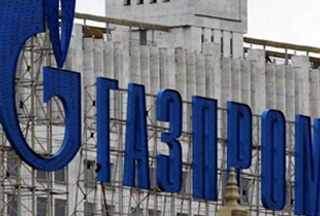
Russian Gas Flaring: a Political or Technical Problem?
Publication: Eurasia Daily Monitor Volume: 6 Issue: 211
By:

On December 2, the Russian Federal Anti-Monopoly Service reportedly will consider the conflict between two Russian state-owned companies –Gazprom and Rosneft. The decision came after Rosneft filed a complaint alleging that Gazprom limited Rosneft’s access to the Russian main gas pipeline network from April through August. Because it was unable to sell the gas, Rosneft said it had to flare off associated gas in quantities exceeding the maximum amount permitted by environmental legislation, thus incurring a fine (The Moscow Times, October 29).
Gazprom controls the country’s gas transmission network –the main system of pipelines used to transport gas throughout the country. Rosneft has to use the system to transport the gas that it obtains as part of the oil drilling process from its oil fields in eastern Siberia (The Moscow Times, October 29).
A recent study by the World Bank using satellite images, estimated that in 2008 Russia flared some 40 billion cubic meters of associated petroleum gas. This resulted in a loss of nearly $13 billion to the state and exceeded the combined volume of gas flared by Nigeria, Iran, Saudi Arabia, Algeria and Indonesia in that year (www.web.worldbank.org).
In August 2007, the then President Vladimir Putin set 2011 as a deadline for Russia to reduce flaring to 5 percent of the country’s associated gas production from the current 45 percent. However, in December 2008 Russian Natural Resources Minister Yuri Trutnev said that the deadline had been pushed back to 2014 (Interfax, December 4, 2008), but declined to specify any reason for the delay.
Why is Russia, which is highly sensitive about timely payments from customers for its gas, so tardy in allowing such state-owned oil companies as Rosneft, the biggest flarer, to burn money? Is this merely a technical question or does it involve opaque political decisions?
After the collapse of the Soviet Union, the then Chairman of Gazprom, Viktor Chernomyrdin, convinced President Boris Yeltsin that Gazprom should be allowed to control the gas pipeline system in Russia and become the sole exporter of gas to the former Soviet Union and Europe.
With Putin’s ascent to the presidency, Russian oil companies were hoping to gain access to Gazprom’s pipeline system along with the right to export their own gas. This however, has not materialized. The Russian domestic gas market, which is fully controlled by Gazprom’s ownership of all trunk pipelines and most of the low-pressure local distribution pipelines, allows the gas monopoly to control gas sales by oil companies, a situation which continues to be a major point of conflict between Putin and the few remaining independent Russian oil companies.
According to an internal Russian memorandum prepared in 2003 (“The Division of the Gas Market: First Lessons and Perspectives”) which is in the possession of the Jamestown Foundation, “This [Gazprom’s control over the pipelines] gives Putin a major edge over domestic and foreign policy. The president, thanks to Gazprom, is able to exert pressure on oil companies and on regional leaders,” according to the authors of the memorandum.
It goes on to note that: “In fact, the owners of oil companies were not interested for many years in gas production…It was not profitable to sell gas on the domestic market due to the regulated low prices and the oil industry insisted on gaining access to export facilities. Gazprom, however, is not about to give in without a fight… Relying on the support of the president and the ‘power faction’ within the nomenclature; which in fact controls the gas monopoly, and therefore is not interested in weakening Gazprom”
Given their lack of support and Gazprom’s ironclad control of the export pipelines, Russia’s oil companies had no choice but to flare billions of cubic meters of gas for years on end, sending millions of tons of pollutants into the atmosphere –all with the short sighted blessings of Putin and his team.
Are there alternatives to flaring Russian gas aside from exporting the gas to Europe?
A study by the Washington-based PFC Energy analyzed and compared five options for increasing associated gas utilization in Russia. They were:
1. Generation of electricity to provide power to the oil field.
2. Generation of electricity for the regional market.
3. Process into LPG (propane, butane), petrochemicals and dry gas.
4. Process into diesel or methanol Gas to Liquids
5. Re-injection for Enhanced Oil Recovery (https://www.highbeam.com/doc/1P3-1515408521.html).
Despite the obstacles placed before them, some Russian oil companies have made significant strides in utilizing Associated Petroleum Gas (APG) among them: Surgutneftegaz, Sibur, TNK-BP, and TatNeft. In 2007, Surgutneftegaz achieved the highest level of APG utilization in Russia equal to 95 percent. TNK-BP and Sibur set up Yugragazpererabotka JV in order to ensure maximum efficient receiving and processing of all available APG. This JV also plans to process APG produced by other market participants (https://www.oilandgaseurasia.com/articles/p/97/article/883/)
On October 20, the Russian newspaper Vedomosti reported that the energy ministry was developing a new scheme for exporting gas to Europe –one which would allow Russian oil companies to export their gas to Europe in 2011 for a price of $128.5 per thousand cubic meters (tcm) in the existing Gazprom pipelines in return for raising domestic Russian prices for gas from the current $58 per tcm to a price yet to be determined. The estimated price under existing contracts for gas to E.U. customers in 2011 has been $236 per tcm.
Gazprom, according to Vedomosti, has not yet agreed, but apparently pressure is building on Gazprom CEO Alexei Miller to agree to this formula – or else. An additional 50 bcm of gas available for export might go a long way to meet Russia’s export commitments to its customers given the ambitious pipeline projects it has pledged to construct.
However, the question remains is Putin and his team willing to provide support to the oilmen and abandon their long affair with Gazprom? Who would stand to gain from this? Will the Russian government remain committed to its deadline of 2014 to reduce flaring or are there doubts on the part of the elite as to the wisdom of forming a new relationship with oilmen and leaving a tried and true mistress, Gazprom, traumatized?




